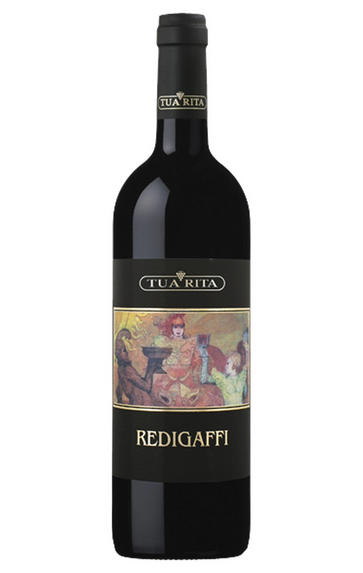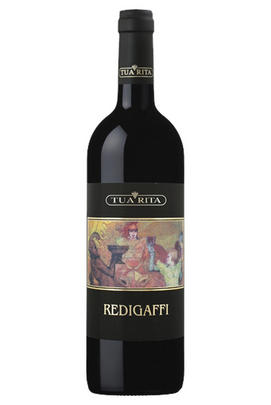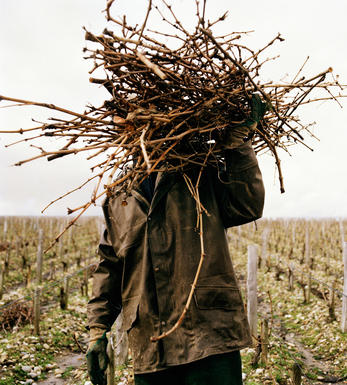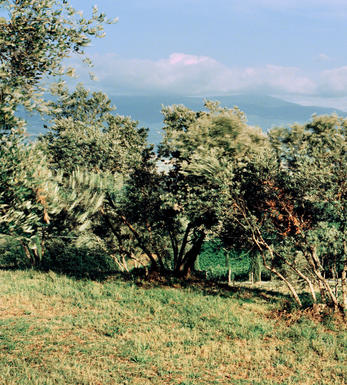
2018 Redigaffi 7, Tua Rita, Tuscany, Italy

Critics reviews
This is a precious release of just 411 magnums. The Tua Rita 2018 Redigaffi 7 Magnum represents the second edition of a wine that was only ever made before in 2013. The exact DNA of the wine is shrouded in mystery, as 2,700 vines were planted in 1988 and the clones used have never been fully identified. These especially concentrated clusters of Merlot have produced an ambitious wine of soaring intensity and lasting power. The bouquet reveals pressed blackberry and cherry liqueur with spice, leather and cured tobacco. The wine is explosive and opulent, and it will surely delivers lots of pleasure and comfort to the few of us lucky enough to taste it.
Drink 2024 - 2050
Monica Larner, Wine Advocate (October 2021)
Intense aromas and flavors of black currant, blackberry, violet and resinous oak highlight this fluid yet firmly structured red, which is long, with a vanilla- and toast-tinged aftertaste. Shows fine balance, with a youthful freshness. Merlot. Best from 2023 through 2036. 1,100 cases made, 80 cases imported.
Bruce Sanderson, Senior Editor at Wine Spectator (October 2021)
Aromas of walnuts and bark with some toasted oak and red fruit. Tapenade and violets, too. Changes all the time. This is full-bodied with lots of richness and concentration. Impressive weight and density. Takes no prisoners, but maintains freshness.
Best after 2026
James Suckling, JamesSuckling.com (July 2022)
About this WINE

Tua Rita

Tuscany
Responsible for only 6 percent of Italy's total wine production in 2006 (half that of the Veneto) Tuscany may not be a heavyweight in terms of quantity, but as the home of two of the country's most famous fine wines - Chianti and Brunello di Montalcino - it certainly holds its own in terms of quality.
Tuscany is Italy's most ancient wine region, dating back to the 8th century BC when the Etruscans developed the area in parallel with the Greeks, before ceding to the Romans. Along with building roads and sewers, they developed the region's viticultural potential, using wood for winemaking rather than amphorae, and passing their expertise onto their French neighbours. With the demise of Rome in the 5th century AD, the Longobards established Lucca as the capital of what was then known as Tuscia. Florence and Siena became banking and trading hubs during the Middle Ages, with Chianti – then a white wine – first documented in the 14th century.Tuscany passed from the Medicis to the Habsburgs as part of the Holy Roman Empire, and then onto the Austrian Empire before becoming part of a reunified Italy in 1861. The quality of Chianti was first recognised by the Grand Duke of Tuscany, Cosimo III, who classified its finest areas in 1716.
Located in the west-central part of the country with the Tyrrhenian Sea lapping its coastline, Tuscany's climate ranges from Mediterranean on the coast to continental deep in the Apennines. More than two thirds of the province is covered with hills, an important terroir factor in the production of fine Tuscan wine. The finest such areas are Chianti Classico, Chianti Rufina, Brunello di Montalcino, Vino Nobile di Montepulciano, Morellino di Scansano and Bolgheri. Sangiovese (in its various clones) is the black grape of choice.
Recommended producers: Valgiano, Caiarossa, Villa Calcinaia, Bibbiano, Badia a Coltibuono, La Serena, Scopetone, Lisini, Sesti, San Giuseppe, Cerbaiona.

Merlot
The most widely planted grape in Bordeaux and a grape that has been on a relentless expansion drive throughout the world in the last decade. Merlot is adaptable to most soils and is relatively simple to cultivate. It is a vigorous naturally high yielding grape that requires savage pruning - over-cropped Merlot-based wines are dilute and bland. It is also vital to pick at optimum ripeness as Merlot can quickly lose its varietal characteristics if harvested overripe.
In St.Emilion and Pomerol it withstands the moist clay rich soils far better than Cabernet grapes, and at it best produces opulently rich, plummy clarets with succulent fruitcake-like nuances. Le Pin, Pétrus and Clinet are examples of hedonistically rich Merlot wines at their very best. It also plays a key supporting role in filling out the middle palate of the Cabernet-dominated wines of the Médoc and Graves.
Merlot is now grown in virtually all wine growing countries and is particularly successful in California, Chile and Northern Italy.


Buying options
Add to wishlist
Description
This is a precious release of just 411 magnums. The Tua Rita 2018 Redigaffi 7 Magnum represents the second edition of a wine that was only ever made before in 2013. The exact DNA of the wine is shrouded in mystery, as 2,700 vines were planted in 1988 and the clones used have never been fully identified. These especially concentrated clusters of Merlot have produced an ambitious wine of soaring intensity and lasting power. The bouquet reveals pressed blackberry and cherry liqueur with spice, leather and cured tobacco. The wine is explosive and opulent, and it will surely delivers lots of pleasure and comfort to the few of us lucky enough to taste it.
Drink 2024 - 2050
Monica Larner, Wine Advocate (October 2021)
wine at a glance
Delivery and quality guarantee